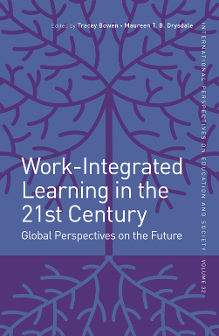
Index
Work-Integrated Learning in the 21st Century
ISBN: 978-1-78714-860-4, eISBN: 978-1-78714-859-8
ISSN: 1479-3679
Publication date: 29 August 2017
Citation
(2017), "Index", Work-Integrated Learning in the 21st Century (International Perspectives on Education and Society, Vol. 32), Emerald Publishing Limited, Leeds, pp. 205-216. https://doi.org/10.1108/S1479-367920170000032020
Publisher
:Emerald Publishing Limited
Copyright © 2017 Emerald Publishing Limited
INDEX
- Prelims
- Part I Learning, Work, and Experience: New Challenges and Projections for WIL
- Toward a Model of Work Experience in Work-Integrated Learning
- Navigating Continuous Change: A Focus on Self-Direction and Skills and Knowledge Transfer
- Workplace Learning in Higher Education: Two Examples from a Swedish Context
- WIL in Liberal Arts Programs: New Approaches
- Part II Affordances, Impacts, and Challenges of New Technologies
- Flourishing in the Face of Constant Disruption: Cultivating the T-Professional or Adaptive Innovator Through WIL
- Learning in Hybrid Spaces: Designing a Mobile Technology Capacity Building Framework for Workplace Learning
- The Impact of Digital Communication Technologies and New Remote-Working Cultures on the Socialization and Work-Readiness of Individuals in WIL Programs
- Part III Work-Readiness for a Diverse World
- Repositioning Work-Integrated Learning in Diverse Communities
- Intercultural Competency Development Curriculum: A Strategy for Internationalizing Work-Integrated Learning for the 21st Century Global Village
- Professional Identities and Ethics: The Role of Work-Integrated Learning in Developing Agentic Professionals
- Part IV Health, Wellbeing, and Pathways to Success
- Driving Change: Students Shaping and Reshaping Work-Integrated Learning Spaces
- Pathways to Mental Health and Wellbeing: Understanding and Supporting Students During Critical School-to-Work Transitions
- Conclusion – Moving Forward: WIL in the 21st Century
- About the Authors
- Index